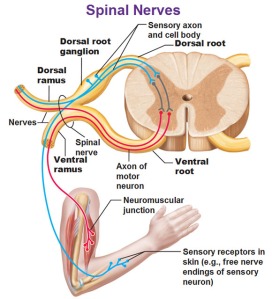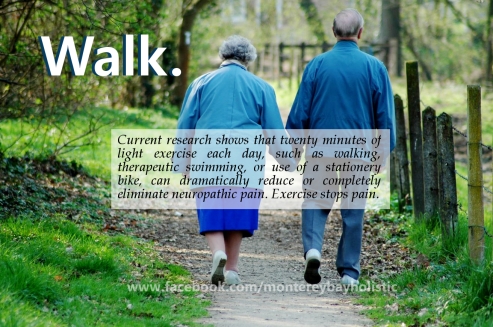WHAT IS NEUROPATHIC PAIN?
Nerve pain can be extremely uncomfortable and even fatal. There are different types of nerve pain and neuropathy. Neuropathy can effect the internal organs or the extremities and joints.. Peripheral neuropathy can result from problems such as:
- traumatic injuries
- HIV
- infections
- metabolic problems
- exposure to toxins
- heredity
- medication side effects.
WHAT ARE THE SYMPTOMS OF NERVE PAIN?
Symptoms of nerve pain or neuropathic pain include tingling and numbness extremities. Many patients report sharp shooting pain, or a burning, throbbing and aching feeling. The loss of sensation is described as the feeling of wearing a thin stocking or glove. These sensations are caused by nerve damage to the brain and spinal cord throughout the rest of the body. Diabetic neuropathy is a category of nerve disorders for people with diabetes. Some of the more common conditions which may be associated with diabetic neuropathy include:
- third nerve palsy
- mononeuropathy
- mononeuropathy multiplex
- diabetic amyotrophy
- a painful polyneuropathy
- autonomic neuropathy
- thoracoabdominal neuropathy.
According to the Mayo Clinic definition of neuropathy,
“Peripheral neuropathy, a result of nerve damage, often causes numbness and pain in your hands and feet. Autonomic neuropathy is a nerve disorder that affects involuntary body functions, including heart rate, blood pressure, perspiration and digestion. It isn’t a disease. Autonomic neuropathy refers to damage to the autonomic nerves.
“Depending on the affected nerves, symptoms of diabetic neuropathy can range from pain and numbness in your extremities to problems with your digestive system, urinary tract, blood vessels and heart. For some people, these symptoms are mild; for others, diabetic neuropathy can be painful, disabling and even fatal.”
WHAT IS THE LATEST RESEARCH?
The most exciting recent research is that of Dr. Yu-Wen Chen, PhD, Associate Professor, Department of Physical Therapy, China Medical University. Dr. Yu-Wen Chen is the lead researcher, along with other colleagues, who studied the effects of exercise on neuropathic pain. The most recent study focused on the protein known as Hsp72, known to protect cells from a variety of stresses. The study, appearing in the February 2013 issue of Anesthesia & Analgesia, used rats, divided into four groups: normal sedentary rats, normal rats with exercise, sedentary diabetic rats and diabetic rats with exercise. Diabetes was chemically induced into the control group diabetic rats.
After two weeks, the diabetic sedentary rats exhibited signs of diabetic peripheral neuropathy (DPN). They demonstrated abnormal responses to temperature and pressure, both of which are indications of neuropathic pain. However, the diabetic rats that had exercise showed delayed progress of tactile and thermal hypersensitivity. According to the results, the study showed that exercise significantly effected body weight loss and diabetes-induced blood glucose levels and body weight loss. Says Dr.Yu-Wen Chen and the other authors of the study,
“These results suggest that progressive exercise training markedly decreases diabetes-associated neuropathic pain, including thermal hyperalgesia and mechanical allodynia. In rats, this protective effect is related to the increase of Hsp72.”
This study was similar to another study also conducted by Dr. Yu-Wen Chen and others last year, which concluded significant reductions in neuropathic pain in rats assigned to swimming or treadmill running.

Dr Chen and colleagues examined the effects of exercise on neuropathic pain induced by sciatic nerve injury in rats. After nerve injury, some rats performed progressive exercise — either swimming or treadmill running — over a few weeks, and the researchers recorded observable pain. The researchers concluded that significant reductions were found in neuropathic paor treadmill running. Exercise reduced abnormal responses to temperature and pressure — both characteristic of neuropathic pain. Exercise also led to reduced inflammation-promoting cytokines in sciatic nerve tissue — specifically, tumor necrosis factor-alpha and interleukin-1-beta. In the experiments, exercise reduced abnormal pain responses by 30 to 50 percent
WHAT EXERCISE IS RECOMMENDED FOR NEUROPATHIC PAIN?
Currently doctors agree that low-impact exercise for about 20 minutes a day, is often best for chronic nerve pain because it is much less strenuous on joints and feet. This would include:
- walking
- water aerobics
- recumbent stationary bike
- elliptical trainer.
Less intensive exercises improve: blood circulation, and increase movement and heart rate, three things which can lesson the symptoms of neuropathic pain. Muscle damage can be a result of excessive exercise and can be especially painful for someone who already suffers from nerve pain. It’s always best to check with your trusted physician or health care provider before beginning a new exercise routine.
____________________________________

This article is written by Jean Voice Dart, M.S. Special Education from Illinois State University. Jean is a published author and has written hundreds of health articles as well as hosting a local television program, “Making Miracles Happen.” She is a Registered Music Therapist, Sound Therapist, and Master Level Energetic Teacher, and is the Executive Director, founder and Health and Wellness Educator of the Monterey Bay Holistic Alliance. The Monterey Bay Holistic Alliance is a registered 501 (c) 3 nonprofit health and wellness education organization. For more information about the Monterey Bay Holistic Alliance contact us or visit our website at www.montereybayholistic.com.
Disclaimer: The Monterey Bay Holistic Alliance is a charitable, independent registered nonprofit 501(c)3 organization and does not endorse any particular products or practices. We exist as an educational organization dedicated to providing free access to health education resources, products and services. Claims and statements herein are for informational purposes only and have not been evaluated by the Food and Drug Administration. The statements about organizations, practitioners, methods of treatment, and products listed on this website are not meant to diagnose, treat, cure, or prevent any disease. This information is intended for educational purposes only. The MBHA strongly recommends that you seek out your trusted medical doctor or practitioner for diagnosis and treatment of any existing health condition.



